R.N. Repair Base
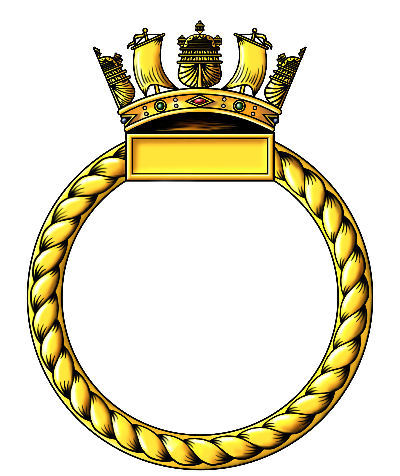
No badge issued for this vessel
Battle Honours
None
Specifications
Location: New Farm Wharf Brisbane, Queensland, Australia
Function: Fleet Repair Base
Commanding Officers
CCdr. J. F. Steemson RN
Apr 1st 1945 - Oct 14th 1945
Lt. Cdr A. B. Palmer RNR Oct 1945
Related items
None
Reminiscences
None
Gallery
None
H.M.S. FURNEAUX
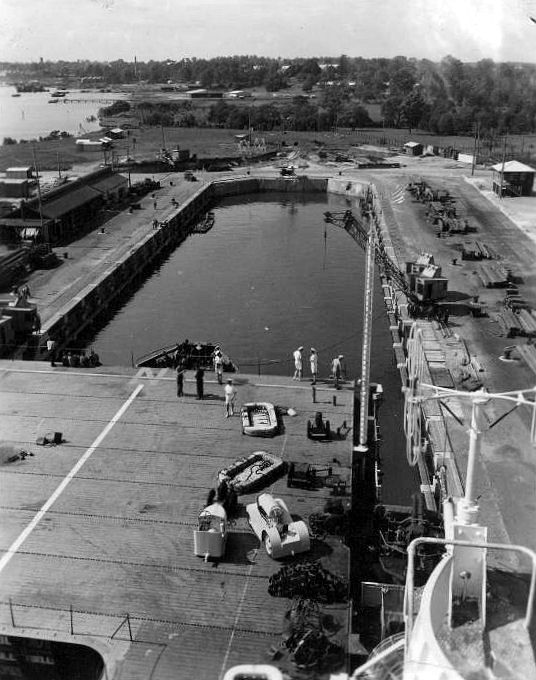
The escort carrier H.M.S. SLINGER enters the Cairncross graving dock after arriving at the RN repair depot, Brisbane for engine repairs. Photo courtesy of Mrs. Rita Truman
History
In January 1945 the Admiralty established an RN Depot in Brisbane in preparation for the arrival of the British Pacific Fleet in Australia. Commander John F. Steemson R.N. was appointed as Commanding Officer, H.M.S. FURNEAUX, RN Depot Brisbane, on January 12th. The base accounts were held by the RN Base Sydney, H.M.S. GOLDEN HIND until it was commissioned as an independent command on April 1st 1945.
The RN depot was established at New Farm Wharf (also known as Capricorn wharf) the home of the US Navy's Submarine Repair Unit. This base was due to be transferred to the Admiralty on loan in early 1945 when the US navy was withdrawing from many of its Australian bases as the war moved closer to the Japanese mainland. Many of the vacated facilities in the Brisbane area were to be transferred on loan to the Royal Navy.
Responsible for other RN units in Brisbane
While the RN Depot was establishing itself another RN contingent arrived in the city. At the beginning of February 1945 the advance party of Transportable Aircraft Maintenance Yard No.1 (TAMY 1) arrived to prepare the way for the main unit to be installed at Archerfield airfield on the other side of the city. Responsibility for this party, along with Special Maintenance party No. 1 (No.1 S.M.P) and 80 hands loaned from H.M.S. GOLDEN HIND fell to RN Depot Brisbane until the main body of TAMY 1 arrived and commissioned as H.M.S. NABSFORD on March 27th 1945. Accommodation was provided by the transfer of the former USN Seabees base at Rocklea Camp in Brisbane.
Rapid expansion
From April the RN Depot underwent a rapid expansion as the USN Submarine Repair Unit at New Farm Wharf came fully under its control from April 20th. Established on April 14th, 1942, New Farm Wharf naval supply depot grew to become the largest United States naval base in continental Australia and had access to two dry docks; the South Brisbane dry dock up river and the Cairncross graving dry dock (the largest graving dock in the southern hemisphere) down river. The former USN rest camp complex at Coolangatta, 65 miles south of Brisbane on the Queensland coast was transferred on April 26th and is also believed to have come under the control of H.M.S. FURNEAUX.
On April 1st H.M.S. FURNEAUX commissioned as an independent command and an unusual ceremony had to be performed. Due to a technicality found in section 67 of the Naval Discipline Act 1866, the regulations only applied to officers and men of the Royal Navy borne on the books of a warship. To get around this it was necessary to allocate the title of the establishment to an actual vessel which became the nominal depot ship for the men allocated to the establishment. Since H.M.S. GOLDEN HIND was already an independent command with its own nominal depot ship other units were "borne on the books" for pay, Victualling and discipline. In this case the motor vessel NL 10 was renamed H.M.S. FURNEAUX in a short ceremony held at the base. After Commander Steemson read the commissioning warrant and addressed the ship's company and guests, Mrs. Thomas, wife of Captain E. P. Thomas, R.N, Senior Naval Officer Brisbane, broke a bottle over the bows. Also established at this time was RN Auxiliary Hospital Brisbane, (no details known) and its accounts were held on the books of H.M.S. FURNEAUX .
Open for business
H.M.S. FURNEAUX received its first customer in the form of the escort aircraft carrier H.M.S. SLINGER which arrived in the port of Brisbane on April 19th to undergo repairs. She had limped back from the Admiralty Islands, at reduced speed, having shed some gear teeth from her Low Power Turbine; The job required her to be berthed in a dry dock but none was available until the 29th when she entered the recently opened Cairncross graving dock, the first carrier to use the dock. Repairs took a month to complete and a cover story was put out to the press claiming the ship was docked for hull painting. SLINGER put to sea on May 29th.
Next to arrive was the X-Craft depot ship H.M.S. BONAVENTURE which reached Brisbane on April 27th carrying the six midget submarines of the 14th Submarine flotilla. She operated out of the base and at locations on the Queensland coast during June and early July before departing for operations.
The BPF arrives back in Australia
The British Pacific Fleet had been carrying out offensive operations in the Pacific participating in the invasion of Okinawa (Operation ICEBERG) in March through May and was expected to return to Australia for a replenishment and maintenance period in June. The bulk of the vessels left Manus in the Admiralty Islands and proceeded to Sydney, others however were allocated to Brisbane for repairs.
The cruiser H.M.S. EURYALUS arrived from Manus for repairs and maintenance on June 1st, leave was granted during the four week stay. EURYALUS sailed for Manus on June 29th. The destroyer depot ship H.M.S. MONTCLARE, Headquarters ship of Flag Officer (Destroyers) BPF, Rear Admiral J.H. Edelsten, arrived in Brisbane from Manus in early June to restore the ship and undergo defect rectification. She sailed from Brisbane carrying Rear Admiral Fleet Train (RAFT) embarked for passage to Manus on the 24th. The destroyer H.M.A.S. NIZAM also arrived at the beginning of June for maintenance and leave, she sailed to rejoin the BPF on the 28th. These ships were joined by the River-class Frigate H.M.S. AVON which also arrived in June for a two month refit.
Post V-J Day rundown to closure
On the afternoon of Thursday August 16th 1945 servicemen from Britain, the United States, Australia and the Netherlands East Indies marched six abreast in Brisbane's Victory parade About 10,000 men and women of all, services took part in the parade, including the WRNS and ratings from H.M.S. FURNEAUX. Once the victory celebrations were over it was back to work as usual for the Royal Navy Depot as ships would still require the services of the repair facility as the focus of the fleet switched to the repatriation of those displaced by the war.
On the evening of Thursday, September20th the captain and officers of H.M.S. FURNEAUX entertained 500 guests at the Officers' Club, Oxlade Drive, New Farm. Commander J. P. Steemson. R.N.. and First Officer Celia Harrod W.R.N.S. presided over the event at which the ship's band played for dancing in the ballroom. Senior military guests included Captain and Mrs. E. P. Thomas. Surgeon- Commander & Mrs. G. Cameron, and Major-General and Mrs. Stantke; local dignitaries and celebrities were also amongst the guest list.
There are no ships listed again until October when the sloop H.M.S. PHEASANT arrived in Brisbane for refit. There were plans to establish an accounting base to be commissioned H.M.S. FURNEAUX II on September 1st 1945 but after the Japanese surrender this was cancelled.
On the evening of Wednesday October 3rd 1945 a farewell ball was held at the Brisbane City Hall. Fourteen hundred dancers attended the ball, which was arranged by the men of H.M.S. FURNEAUX to return the hospitality enjoyed during their few months in Brisbane. Lt. Cdr A. Palmer, R.N.R. acted as host and he expressed the appreciation of the hospitality which Brisbane had shown to the men.
Commander Steemson relinquished Command of RN Depot Brisbane on October 14th 1945; command is believed to have passed to Lt. Cdr A. B. Palmer RNR (executive officer).
Final days
H.M. Troop Ship STRATHEDEN arrived at Hamilton wharf, half a mile down river from H.M.S. FURNEAUX, on the afternoon of Sunday October 28th to embark one thousand Royal Navy and Royal Marine personnel for passage home to the UK. The STRATHEDEN arrived from Sydney carrying about 1300 men and women from all branches of the armed forces and civilians; after loading she set sail for England, via Fremantle, Bombay, and Suez. A large portion of the personnel embarking at Brisbane came from H.M.S. FURNEAUX, and H.M.S. NABREEKIE (M.O.N,.A.B. VII) which was running down to closure at Meeandah, Brisbane.
H.M.S. FURNEAUX was paid off as an independent command on October 28th 1945.
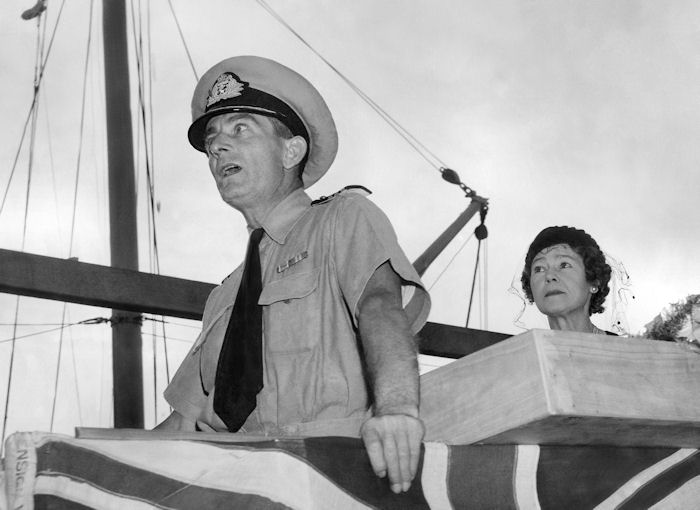
Commander John F. Steemson R.N. Commanding Officer H.M.S. FURNEAUX after reading the commissioning warrant. Photo courtesy of Mr. Michael Steemson
Above left - Motor vessel NL. 10 ready for her renaming ceremony. Above right - Mrs. Thomas flings the champagne bottle to Christen the ship. Photos courtesy of Mr. Michael Steemson
Last modified: 23 February 2023
Primary information sources
Additional sources:
Jones, D. & Nunan, P. (2005) 'U.S. subs down under: Brisbane, 1942-1945' Naval Institute Press, Annapolis
Special thanks to Mr.. Michael Steemson, son of Commander John F. Steemson R.N., for his help in researching this history.
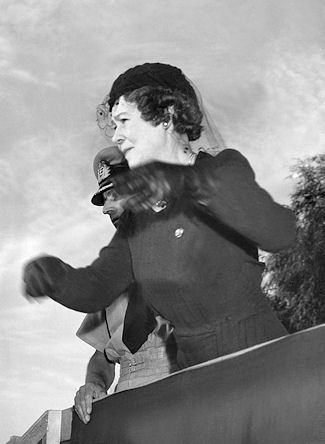
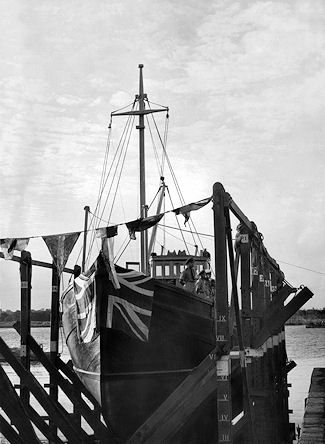
Comments (0)